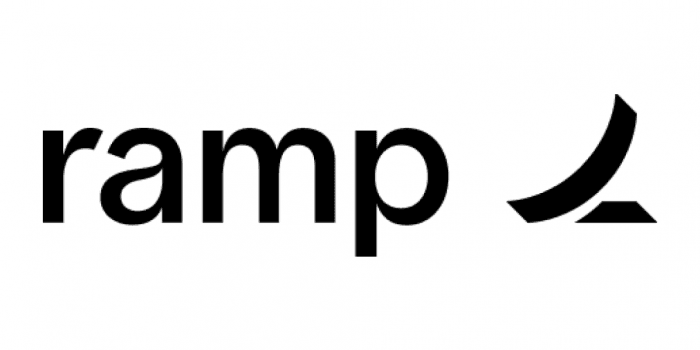If you only read the headlines, you’d think Klarna’s story is a cut-price IPO. The Swedish BNPL pioneer is again lining up a U.S. listing, this time at roughly $13–$14 billion—a far cry from its $45–46 billion peak in 2021. But the more consequential development is in the plumbing: a multi-year forward-flow deal with Nelnet that will let Klarna sell up to $26 billion of newly originated U.S. “Pay in 4” receivables on a rolling basis. The shift turns Klarna—operationally, if not legally—from a balance-sheet lender into a distribution platform with steadier funding and thinner risk. That, more than the sticker price on day one, is what may matter for a durable public-company story.
Table of Contents
ToggleThe numbers the market will underwrite
Klarna’s Q2 2025 scorecard is the cleanest view of the business investors have had in years:
- Revenue: $823 million, up ~20% year over year (like-for-like).
- Adjusted operating profit: $29 million (its 5th consecutive quarter of “operational profitability”).
- Net loss: $53 million (drag from restructuring and stock-based comp).
- GMV: $31.2 billion; active consumers: 111 million; merchants: 790,000.
- Take rate: 2.64% of GMV; provision for credit losses: 0.56% of GMV (vs. 0.42% a year ago).
Two things jump out from the Q2 P&L table. First, transaction costs (processing & servicing, funding costs, and provisions) total $508 million—the single biggest drag on margins. Second, within those costs, funding ($147 million) and credit provisions ($174 million) are the volatile line items that public investors fear most in a consumer-credit cycle. The Nelnet structure goes straight at both.

Forward flow 101: why the Nelnet deal matters
Forward-flow agreements commit an investor (here, Nelnet) to purchase new loans as they’re originated, typically at a pre-agreed price, with Klarna continuing to originate and service the receivables. This particular program covers short-term, interest-free, U.S. Pay-in-4 loans, and is designed to provide predictable, off-balance-sheet funding over multiple years, with “up to $26 billion” of total payment volume expected to be sold over the life of the deal.
Three implications follow:
- Balance-sheet relief. As more of Klarna’s U.S. Pay-in-4 book flows to Nelnet, Klarna should carry fewer U.S. receivables, lowering funding costs and loss provisions tied to that portfolio. (Depending on the fine print, Klarna may retain limited risk via fees or performance triggers; the parties haven’t published granular waterfall terms.)
- Revenue-mix shift. Pay-in-4 economics are dominated by merchant fees (booked as “transaction & service revenue”). Offloading receivables doesn’t nuke revenue; it tilts it from interest-linked items toward servicing & distribution economics. Klarna’s take rate sat at 2.64% in Q2; investors will watch whether that holds as the mix skews more to off-balance-sheet U.S. volume.
- Scalability optics. A repeatable, external funding pipe—especially with a U.S. counterparty—decouples U.S. growth from the capital constraints of Klarna’s consolidated balance sheet (even though Klarna still operates a Swedish bank). It’s a structural answer to the “BNPL is capital-hungry” critique.
Bloomberg’s read is blunt: an as-much-as $26 billion forward-flow commitment ahead of an IPO is a funding architecture move, not a marketing line. It’s about de-risking the path to scale in the U.S. without ballooning Klarna’s own risk-weighted assets.
The IPO lens: why “distribution, not lending” trades better
Reports say Klarna’s targeting $13–$14 billion in a September U.S. float. Skeptics will fixate on the reset multiple; bulls will frame the capital-light pivot as the valuation bridge: less earnings volatility, cleaner cash conversion, and a clearer path to operating leverage as AI-enabled productivity gains compound. On that last point, Klarna highlights $1.0 million TTM revenue per employee (up 46% YoY) and continued cost discipline (adjusted opex +3% YoY like-for-like vs +20% revenue).
Will that narrative hold? Net losses still matter to public investors even when “adjusted operating profit” is positive. In Q2, the $53 million net loss was primarily restructuring and SBC—items the buy-side will model as non-recurring or equity-comp dilution rather than core unit economics. The more Klarna converts funding & credit costs into a contracted, third-party fee, the more resilient that adjusted margin story becomes through a credit cycle.
What the P&L tells us about BNPL’s real pressure points
A single table from the Q2 release is instructive (numbers in $m): Revenue 823; Processing/Servicing 187; Funding 147; Credit-loss provision 174; Adjusted opex 286; Adjusted op profit 29. Two observations:
- Funding costs + provisions (= $321 m) are ~39% of revenue—and the most cyclical. Shifting Pay-in-4 receivables to Nelnet externalizes a chunk of that volatility.
- Take rate 2.64% held steady YoY even as provision % of GMV rose from 0.42% → 0.56%. That mix resilience is encouraging—if it persists when larger portions of the U.S. book move off-balance-sheet and the accounting presentation changes (e.g., more netted servicing income).
Competitive context: Klarna is not first to discover forward flow
The playbook is familiar. Affirm has long mixed warehouse lines, ABS, and forward flow, including a headline $4 billion commitment with private-credit giant Sixth Street. The appeal is identical: durable, scalable funding that de-links originations from equity capital. When forward-flow investors are plentiful, BNPL originators can manage cost-of-funds and balance-sheet risk while keeping origination, underwriting, and servicing in-house.
Klarna’s edge, however, is distribution density: 790k merchants and 111 million active consumers, with the U.S. now the growth engine—and deep integrations across payment stacks (Stripe, Worldpay, Nexi, J.P. Morgan Payments), plus high-visibility retail anchors like Walmart U.S. (exclusive BNPL provider). Taken together, that’s a wide, defensible funnel through which to route third-party capital.
The risk ledger: what could still go wrong
1) Credit-cycle whiplash. Q2’s provision/GMV climbed to 0.56% from 0.42% YoY, a reminder that even short-duration BNPL isn’t immune to consumer stress. Forward-flow economics can include performance triggers that worsen economics if cohorts deteriorate. The market will scrutinize Klarna’s U.S. delinquency and charge-off curves disclosed in its results materials.
2) Concentration of funding. A single marquee counterparty lowers uncertainty today but raises counterparty concentration risk tomorrow. The bull case is that Nelnet is the first of several capacity pipes Klarna can rotate in as a public company; the bear case is tighter private-credit markets or reduced appetite for short-term consumer paper.
3) Accounting opacity. As Klarna shifts from interest income on held receivables toward servicing/distribution fees on sold loans, revenue lines may look “flatter,” even if transaction margin dollars improve. Investors will need clear disclosure to reconcile take rate, margins, and cash conversion post-shift.
4) Policy overhang. BNPL is maturing into traditional credit oversight. In the U.S., the CFPB’s January 2025 study quantified BNPL’s scale and risks; in Australia, new rules now require credit checks and licenses. Tightening rules can be clarifying for large players—but they also raise compliance costs and compress edge-case economics.
The strategic read-through: from lender to network
Klarna’s core moat isn’t a balance sheet; it’s a two-sided network embedded at checkout and inside commerce journeys. In that light, the Nelnet deal is not just financing—it’s product strategy:
- Identity & underwriting remain with Klarna. That preserves the feedback loop (merchant acceptance → consumer repeat usage → risk models → product attachment).
- Credit risk shifts to investors with appetite for short-duration cashflows. Klarna earns for finding, scoring, and servicing the demand.
- Global leverage rises. Off-balance-sheet U.S. growth can subsidize product expansion (e.g., subscriptions, advertising, wallets) in other markets without over-gearing the bank entity.
This is, in effect, a payments-distribution story with a credit-origination wedge—not a pure lender. Public markets tend to value distribution businesses on through-cycle margin stability and cash generation, not just top-line growth.
What to watch next (and what to ask management)
- S-1/S-4 granularity (or its equivalent):
- Servicing fee schedule and any first-loss or performance-based adjustments in the Nelnet program.
- Revenue recognition changes as receivables migrate off-balance-sheet.
- Segment disclosure for U.S. Pay-in-4 vs. longer-tenor “Financing” products.
- Funding diversity: Are there additional forward-flow buyers or ABS capacity ready to scale alongside Nelnet, to cap concentration risk and anchor cost of funds through rate cycles? (Affirm’s playbook suggests there will be.)
- Unit-economics proof points:
- Transaction margin dollars trajectory as more U.S. volume is sold.
- Provision % of GMV trend and U.S. cohort stability.
- ARPAC (average revenue per active consumer) and merchant density as proxies for network health.
- Distribution leverage: The pace of default PSP integrations (Stripe, Worldpay, Nexi, J.P. Morgan Payments) and large-merchant exclusives (Walmart U.S.), because embedded distribution is the durable moat that competitors struggle to copy.
Bottom line
Klarna’s return to the IPO runway at $13–$14 billion will attract attention for the valuation reset. But the structure is the story: a capital-light, forward-flow-driven U.S. engine that converts BNPL from a funding-intensive model into a distribution-and-servicing business. If Klarna can keep take rates steady while suppressing funding and loss volatility through third-party capital—and prove it with clean disclosure—public markets may look past the scars of 2022 and underwrite the model it is now, not the one it used to be.












